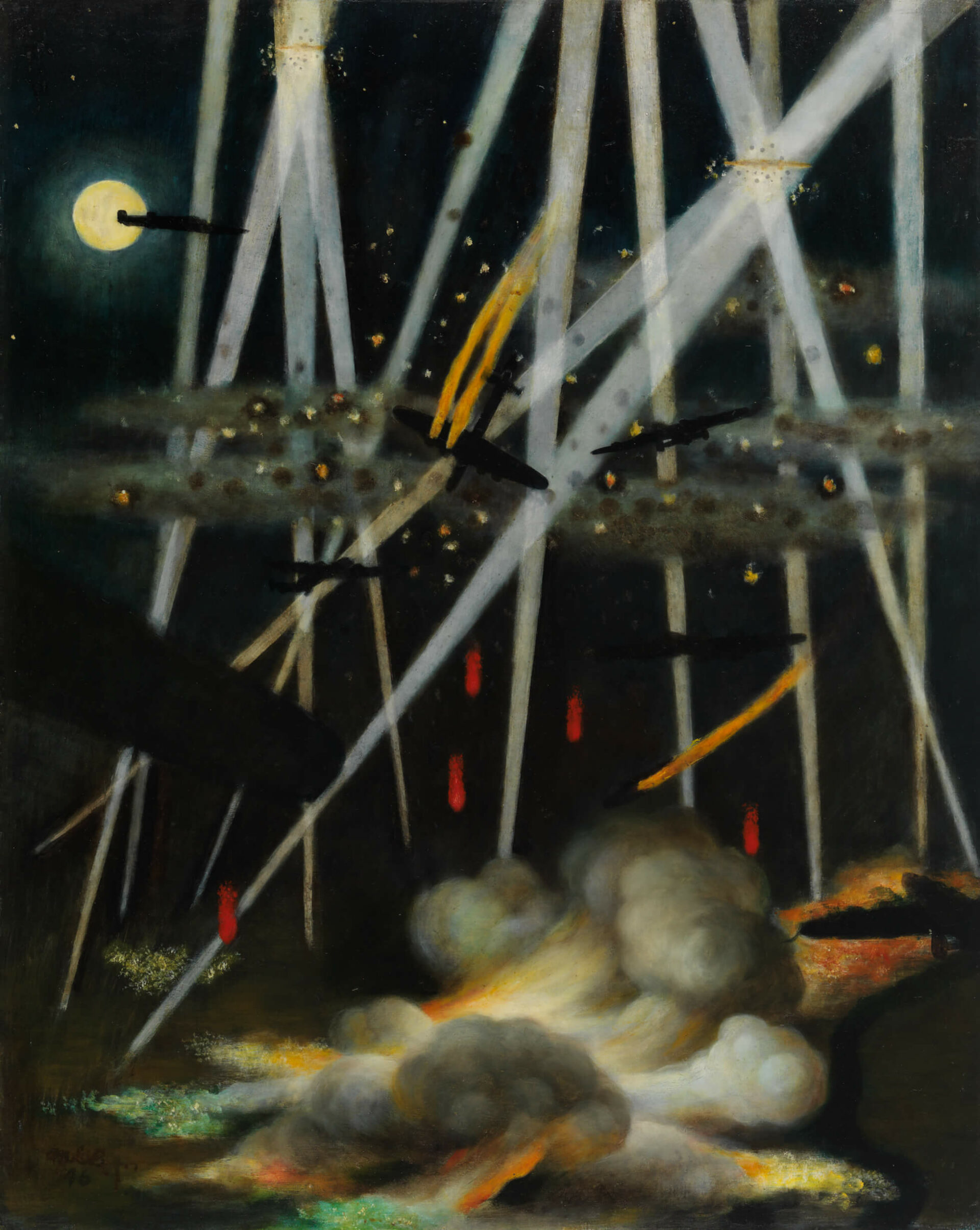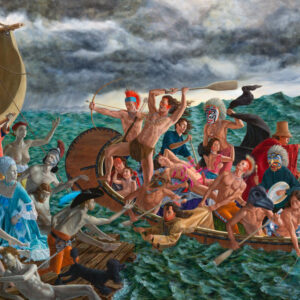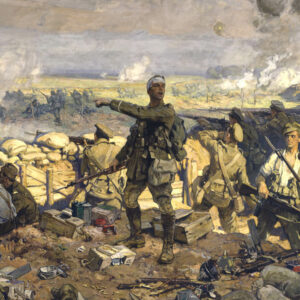Night Target, Germany 1946

Miller Brittain, Night Target, Germany, 1946
Oil and tempera on Masonite, 76.5 x 61 cm
Beaverbrook Collection of War Art, Canadian War Museum, Ottawa
Night Target depicts a bombing raid over Germany. Before Miller Brittain (1912–1968) became an official Second World War artist, he was a bomb aimer tasked with positioning bombs over their targets to achieve maximum destruction. For the duration of a bombing raid, he was in charge of his aircraft—in his case a Halifax Mk. III bomber of the sort decorated by Floyd Rutledge in Fangs of Fire, 1944–45—and he lay flat in the aircraft’s nose directing the pilot until the bombs were released.
In Night Target, Brittain reduces the aircraft, bombs, and shattered city below to an aesthetically pleasing pattern of bright diagonal lines, stars, and smoke. He wrote to his parents in 1944: “The night attacks[,] although they are deadly[,] are very beautiful from our point of view. The target is like an enormous lighted Christmas tree twenty miles away but straight beneath one looks like pictures I have seen of the mouth of hell.” By 1946 his enthusiasm had dwindled as he penned another letter home: “My target picture looks like the real thing they say, but I don’t like it yet as a picture. In fact at the moment, I feel like putting my foot through it.”

All Brittain’s official war work deals with his wartime experiences, which were clearly not easy to forget. After the war, he diverged into the metaphysical in a 5 by 7.5 metre mural, The Place of Healing in the Transformation from War to Peace, 1949–54. Intended for permanent installation in a veterans’ hospital in Saint John, New Brunswick, it is now in storage. Of the three sections that make up the mural, the most disturbing evokes Brittain’s work as a bomb aimer. Set against a bright-red sky illuminated by three fiery globes in front of a townscape of bomb-damaged buildings, a group of broken and prostate figures plead for respite as, above them, a nearly naked figure bearing an immense sword threatens more havoc. One wonders what painful recollections inspired Brittain’s terrible scene. At war’s end, the artist received the Royal Canadian Air Force’s Distinguished Flying Cross, but for the remainder of his life he struggled to cope with the effects of his war service.

 About the Author
About the Author
 More Online Art Books
More Online Art Books
 Acknowledgements
Acknowledgements